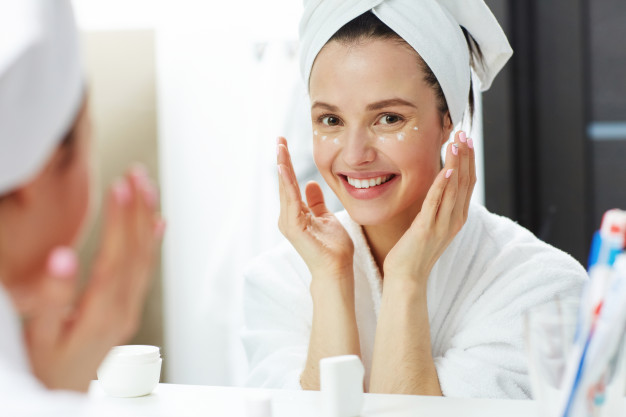When your skin is in serious need of some TLC, book yourself a chemical peel . Though there are different types of peels for various skin types and ailments, a safe bet is always one using glycolic acid. To walk us through what exactly goes on during this magical treatment for melasma, sun spots, and even acne we asked expert dermatologists to spill everything they know about glycolic acid.
What is Glycolic Acid?
Glycolic acid is an alpha hydroxy acid that can be extracted from fruits, sugar beets, and sugar cane. “It is one of the mildest acids that can be used on the skin,” says dermatologist Francesca Fusco. “It dissolves the ‘cement’ that holds the superficial cells together in the upper most layer of skin, allowing it to exfoliate the skin.”
Dermatologist Jeremy Brauer explains that glycolic acid is the go-to ingredient dermatologists normally use to treat acne, scars, fine lines, melasma, hyperpigmentation, and sun spots. You can find it in lower—but still highly effective—concentrations in nearly evert exfoliating serum and mask, as well as at-home peels and cleansers.

How Does a Glycolic Acid Peel Work?
Chemical peels in general are used to exfoliate the skin—so a glycolic acid peel is “a concentrated glycolic acid that can range in percentages to gently exfoliate the upper layer of the skin,” says dermatologist Dhaval Bhanusali.
These peels are available as a treatment in a doctor’s office or as part of a weekly regimen. Introduce glycolic acid into your routine by using it only once a month, says Fusco, then slowly start to increase your use and acid concentration as your skin grows to become more tolerant. If it’s a lower concentration of glycolic acid anything 10 percent or lower), you can use it more than once a week as long as your skin can take it. “Always best to listen o your skin and see how it handles it,” says Bhanusali.
Brauer, however, warns against using these peels every single day. “It’s important that the skin maintain its barrier function. Too frequent application may result in breakdown of the outer layers of skin,” he says.
Why Should I Get a Pro Peel?
If you decide to get an in-office peel treatment with a dermatologist, it will contain a stronger glycolic acid concentration than anything you use at home. “The main differences are concentration or strength, pH, and formulation,” says Brauer. “In-office utilizes higher concentrations, which translates to greater benefits per treatment but also greater risks. At-home peels and products are generally of lower concentrations, so they are safer for the individual consumer, but with less benefit.”
One is not necessarily better than the other; it’s all about what you’re looking for. “For corrective treatments, in-office will always have stronger options,” says Bhanusali. “That being said, most patients like maintenance protocols and want to use these peels as a way of improving long-term skin health. For that, at-home peels are a great option.”
Fusco also stresses the importance of knowing your skin type and sensitivity. She finds very sensitive skin types tend to do better with a lighter at-home peel. If you’re going for an in-office treatment, she suggests starting with the lower strength and increase the concentration the more you go.

What Are The Skin Benefits?
Glycolic acid peels do more than just exfoliate—they totally transform the appearance, tone, and texture of your skin. “They give a nice glow, which is always welcome by my patients,” he says. Fusco agrees and adds that you can expect reduced appearance of fine lines and pores as well. As an added bonus, she says the products you’re already using in your routine will better penetrate the skin after using glycolic acid.
Are There Any Side Effects?
Let’s be honest: we’ve all seen that Sex and The City episode where Samantha gets a chemical peel and it goes terribly wrong. (Who wants their face to be compared to beef carpaccio?). While treatments have improved immensely since the aughts, you should still be careful when getting chemical peels in general. “For sensitive skin, it can sometimes be a bit too much,” says Bhanusali. “It’s important to start slow and work your way up.”
Brauer says irritation, inflammation, redness, scarring, and pigmentation are common side effects. Fusco says to never get a peel if your skin is actively sunburned, infected, or if you’re prone to cold sores. If you are on acne medicine such as Accutane or prescription strength retinol, she says to consult with your doctor before using a glycolic peel.
So there you have it. Minimal risk (when you do your homework of course) for big skin payoff? Sign us up ASAP.
